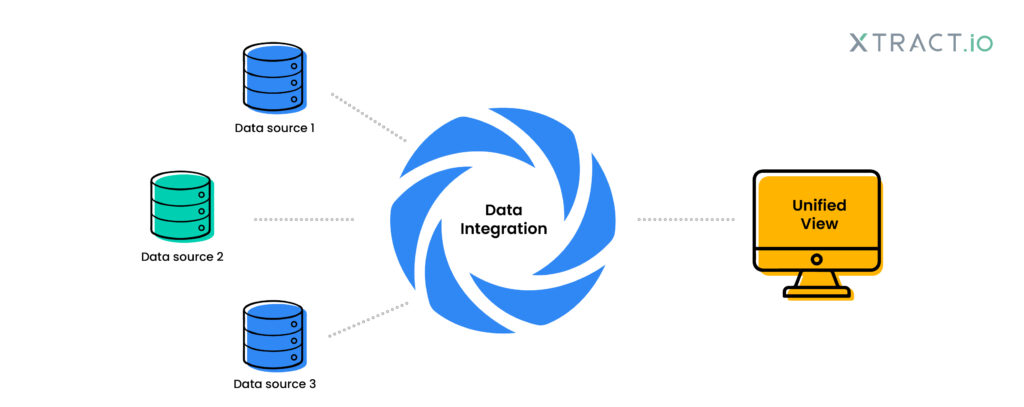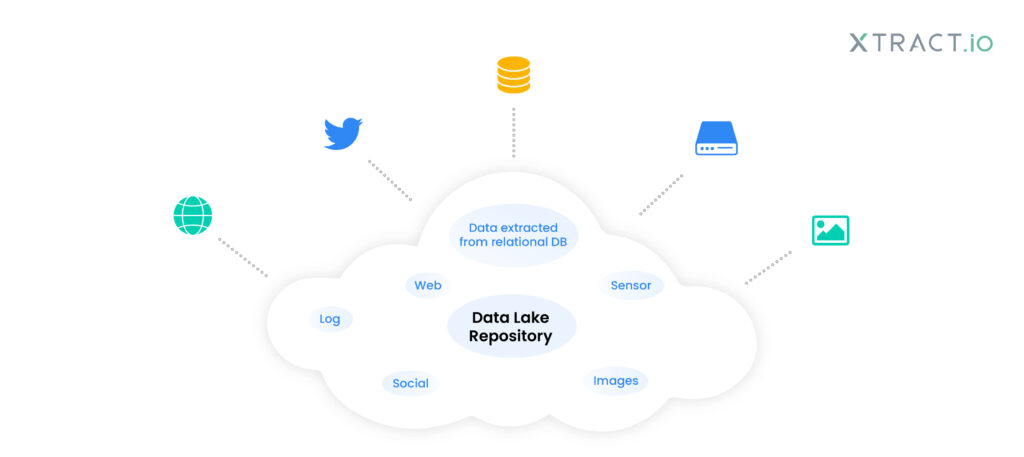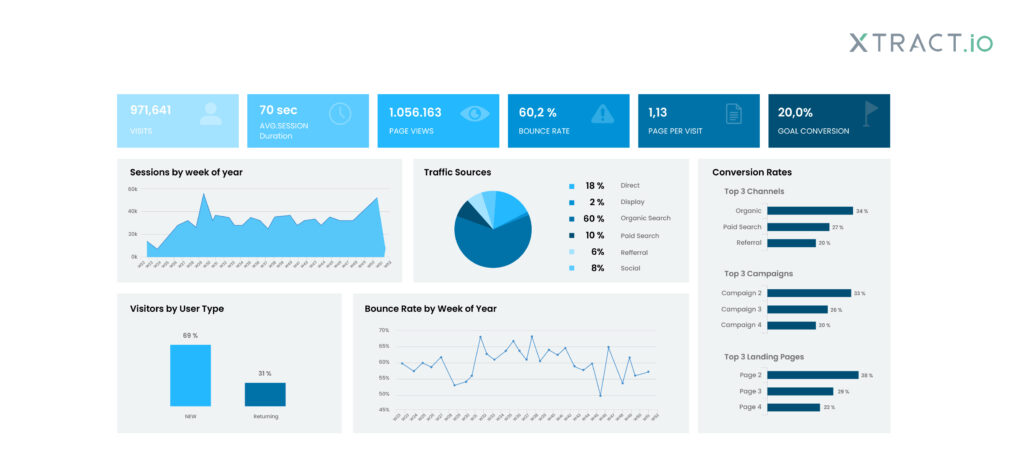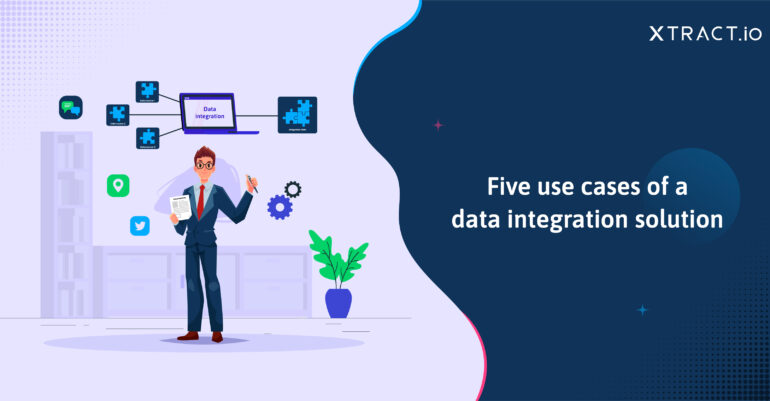Data is a powerful tool for steering your business towards success. Every customer touchpoint generates roughly 2.5 quintillion bytes of data per day in this digital world. However, data is fragmented and exists in silos, and therefore, preparing a simple report takes a significant amount of time and effort.
When each department manages data in separate databases, it adds little value to the organization. Indeed, centralizing all the collected data in a single database will revolutionize the business.
There is a significant disconnect between data management and practical applications of the collected data. You can now bridge this gap and improve your business performance by presenting a unified data view with a robust data integration tool. Data integration tools handle everything from business intelligence reports and customer analytics to real-time information delivery.
What is data integration?
In today’s world, generating or collecting data is not difficult; however, achieving a combined view of the data to derive intelligent business analytics is!
Consider this: you are planning to launch a successful marketing campaign in a short time frame. Is it easy for you to pull data from separate databases focusing on the location, product, and market conditions and then analyze it or analyze all the required data from a centralized location? Isn’t the latter the best option?. Automated data integration helps you to achieve that.

A robust data integration tool will combine data from multiple data silos across the spectrum of applications, consolidate it into a cohesive data set and simplify your business processes. It provides consistent data access and delivery throughout the organization enabling everyone to make informed decisions based on accurate data.
Add value to your business with data integration
According to Forrester, 60 to 73 percent of all data within an organization is unused for analytics, and Gartner claims that the only reason for this is data silos. You can bypass all these bottlenecks, track the available data, identify patterns between past and present data and gain a competitive edge in your business by putting real-time data integration first.
Read on if you’re wondering how combining all of your data in a centralized location can benefit your business. Here are a few advantages to prioritizing data integration:
- Improves collaboration among the team
- Manages time and money effectively
- Enables consistent and seamless data access
- Ensures informed business decision-making
- Helps achieve high customer satisfaction
How do organizations use data integration in business?
Whether in healthcare, finance, telecommunications, or retail, data integration provides an in-depth understanding of market opportunities, current organizational status, and risks involved, allowing you to have a bottom-line impact on the business.
In the financial sector, fraud is a significant problem. With data integration, banks can detect fraud at a much earlier stage. By having all the data gathered in a centralized place, we can deploy AI to detect anomalies and outliers, preventing mishaps quickly. Assume we want to track the performance of a retail industry that operates both online and in-store. The store can easily track everything from sales to labor hours, customer interest, and inventory management by centralizing all the information, regardless of which store or employee entered the data, rather than pulling data from separate sources.
Real-time data integration is a critical solution that businesses should begin focusing on to simplify operational activities and elevate profits.
Let us now look at the data integration applications in real-time.
Migrating data into a data lake
A data lake is a storage repository that stores both structured and unstructured data at any scale, actively helping organizations develop insights and fostering a data-driven culture. Data integration serves as a link between gathering relevant business data and storing it in a data lake.

In the healthcare sector, treating a patient requires all available information, such as the case history, tablets consumed, previous medical records, and general patient data. When data is fragmented, it jeopardizes the patient’s health. The ability of the data integration tool to store all of this data in a data lake from multiple databases in less time will elevate patient care and the hospital image.
Creating a 360-degree view of individual customer
It is critical to know everything there is to know about your customer to pique their interest and become the market leader. To accomplish this, an organization should have a bird’s-eye view by consolidating all customer data with powerful data integration tools.
A sales representative needs to have a consolidated view of the customer database to enrich the customer experience and target the right customer at the right time. Automated data integration allows you to quickly drill down and analyze a customer’s history, resulting in dramatic sales and customer service improvements.
Creating a marketing dashboard
The marketing dashboard will visually represent the data points, indicating how the efforts of the sales and marketing teams are progressing. However, before we can move on to the visual representation of the dataset, we need the necessary data from multiple sources. Automated data integration solution unifies all the data, helping you create marketing dashboards.

A marketing dashboard, for example, will track leads based on open rates, lead quality, bounce rates, and KPIs. The data will be presented visually in the form of charts or graphs, allowing users to make sense of the data at a glance. Creating these dashboards necessitates the use of an ideal and quick data integration platform that can pull in all of the necessary customer and marketing data in the blink of an eye and generate compelling visual images for analysis.
Collaborating records from multiple systems
Most businesses use multiple independent systems to manage their data. Multiple systems increase the possibility of duplicate and outdated data, which directly impacts the company’s strategic decisions. Combining your databases into a centralized system with a data integration solution will help you move your company up the success curve.
For example, if two insurance companies merge, they may have shared customers, partners, and stakeholders’ data stored in different databases. However, how the two brands run their databases may not always agree, resulting in duplicated data. So, it is essential to use a data integration tool to merge the two databases into a single unified database to overcome this.
Receiving data from stakeholders
Every business transaction involves a significant amount of data transfer to and from suppliers and partners. Previously, partners may have faxed the relevant information, which enterprises would then re-enter into their systems. However, this is quite time-consuming and error-prone to process. Automated data integration tools can replace this manual data transfer method.
A manufacturer, for example, may require shipping lists, invoice information, or general product data from other partners or stakeholders. They can use either web services or APIs to transfer information. Data integration tools that can manage these various types of data connections become appealing in this case.
Scale faster with a data integration solution
Data integration does not follow a universal approach. For each organization, the appropriate element may differ. Every organization uses different data management solutions to deal with other data formats. With the proper data integration in place, you can send data to the master data server and receive actionable business intelligence reports in the blink of an eye.
At Xtract.io, we gather a large volume of data for all your business requirements with our automated data integration solution. Schedule a demo with us if you are looking for a robust yet cost-effective automated data validation solution. With our tailor-made solution, we meet all of your expanding business needs.







